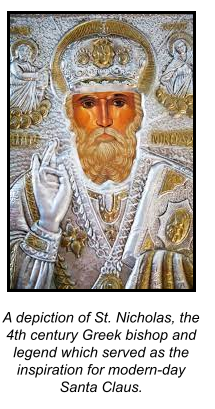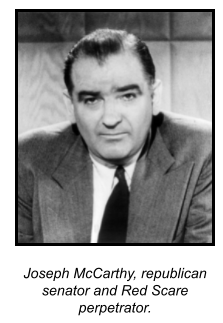How the concept of Santa Claus questions the definition of reality

November 2, 2021
Is Santa real? To anyone above the age of twelve, this may seem like a silly question. Everybody knows it’s just a fable for children! But think about it. How do you know there isn’t a jolly fat man creeping through your chimney every year on the 25th?
In America and beyond, Christmas has been a tradition for many centuries. While the exact day or location of origin is unclear, the holiday is rooted in Christianity and is meant to celebrate the birth of Jesus. Somewhere along the line, the holiday became intertwined with the legend of St. Nicholas, which, over many years, evolved into the myth of Santa Claus.
The story of Santa Claus is said to originate in British colonies of North America, and the character slowly merged into popular culture as lore about him was developed through famous publications; most notably, the poem “The Night Before Christmas”, written in 1823–which gave him a home location, an army of elves, and a personal set of reindeer!
And the rest is history. Now, in the 21st century, lying to children about a jolly old intruder that visits every year bearing gifts is the norm. But why do families each year feel so compelled to carry out such an observably odd tradition, and how does the idea of Santa relate to the concept of reality itself?
In many ways, reality is what we make of it. But what is “real”? What’s “real” is generally considered as what one can see and tangibly prove as existing in the material world. For example, you can perceive an orange with any of your senses, thus proving its existence. You can feel its squishy touch, smell its citrus aroma, taste its sweetness, see its bright exterior, and hear the thud it makes when dropped. But “real” often extends past our human senses.
For instance, take a look at religion. The existence of God cannot arguably be proven with any human senses, but many still believe in the existence of God because of other reasons, and that’s real to them. Different ideas can be real to different people.

As mentioned, reality is what we make of it. It’s no secret that our beliefs manifest our reality, and history can prove that. An entire nation of people can be led to believe that something is real simply because they are told so, and believe it in their hearts.
For example, take a look at McCarthyism. The Republican senator, Joseph McCarthy, was a catalyst for the Red Scare during the peak of the Cold War in the 1950’s. Through the platform of the senate, McCarthy ran with the idea that Communists may be hiding among them as spies. He mongered fear on the grounds that nobody can be completely trusted, and that complete background checks should become a normalcy to combat the threat of Communist infiltration.
While the claims were not entirely dishonest, the extent of delirium that swept the nation as a result of the political intimidation was not proportional to the actual threat; and not long after, what started as a moderate panic evolved into a genuine mass hysteria.
Another example is the authoritarian state of North Korea, led by an absolute dictatorship. The inhabitants are led to believe that the rest of the world is evil and unfavorable, and North Korea is somewhat of a heaven on earth. The government is consistently deceitful to their people and leads people to believe conceptions about the world in general that simply aren’t true.
Now, there may seem that there’s no connection to be made between cases of mass hysteria and Santa Claus. After all, Santa is simply a harmless American tradition, right?
On the contrary, there is a lot to be learned from Christmas’s favorite mascot. It was easy as a young and naive child to not see past the mass media, mall Santas, and hardcore believers that seemed to serve as proof of Santa’s existence. But whether or not the myth of a fat man living in the North Pole with elves and reindeer was truly “real” or not, it was real to the children that believed so wholeheartedly in it.
The bottom line is that the tradition of Santa Claus highlights just how easy it is to manipulate an entire nation of people to invest in a reality with half-truths and deception. The tradition may not have any malicious intentions behind it, and is truthfully quite fun, but it should serve as an inspiration for people to consider; where else in their lives may they have been deceived by those with authority over them, and what could this mean for their own personal reality?



